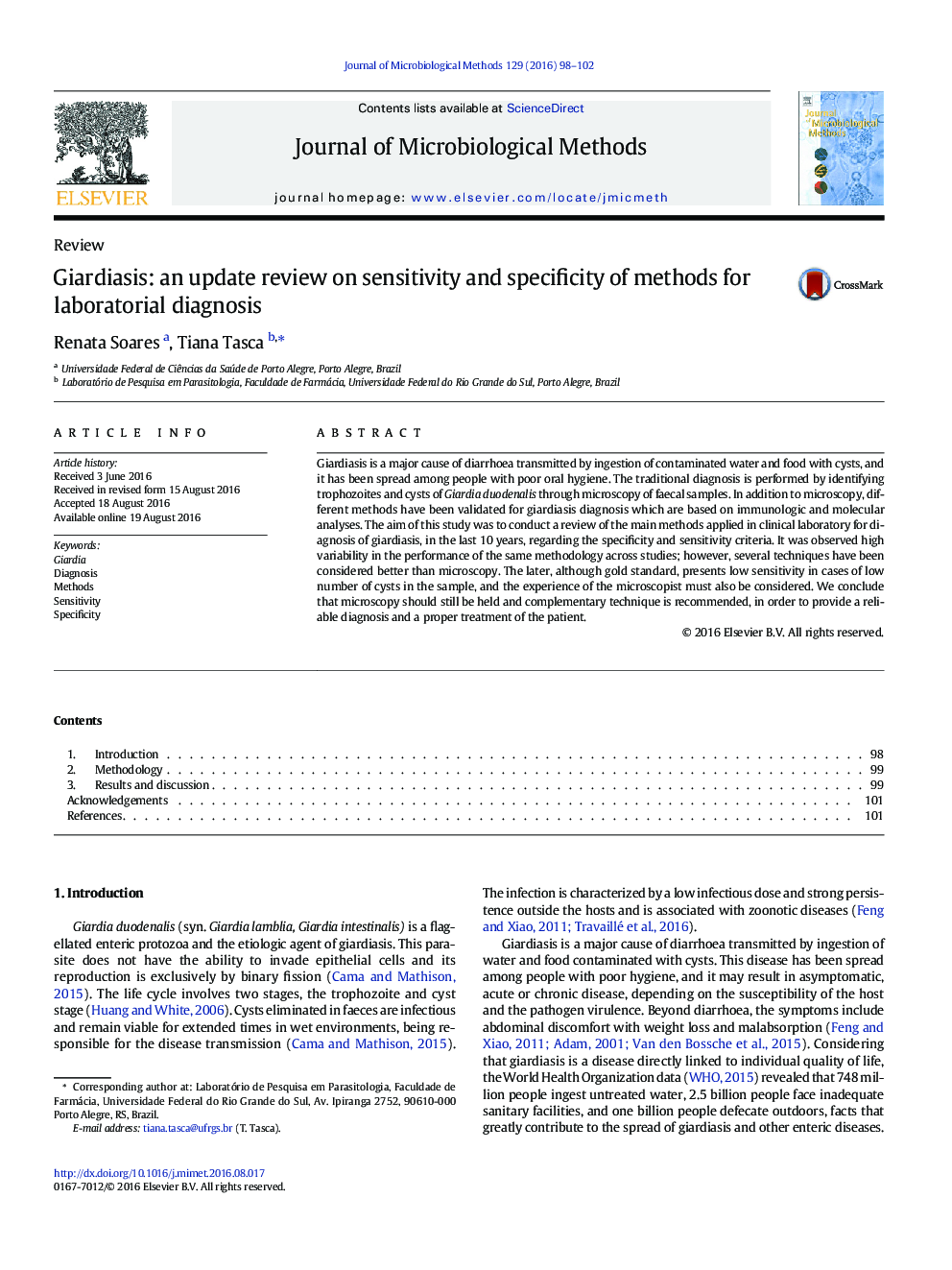| کد مقاله | کد نشریه | سال انتشار | مقاله انگلیسی | نسخه تمام متن |
|---|---|---|---|---|
| 2089679 | 1545914 | 2016 | 5 صفحه PDF | دانلود رایگان |

• This review highlighted the main methods applied for diagnosis of giardiasis.
• There is variability among methods across studies.
• Some techniques present higher sensitivity than microscopy.
• However, microscopy should still be held and complementary technique is recommended.
Giardiasis is a major cause of diarrhoea transmitted by ingestion of contaminated water and food with cysts, and it has been spread among people with poor oral hygiene. The traditional diagnosis is performed by identifying trophozoites and cysts of Giardia duodenalis through microscopy of faecal samples. In addition to microscopy, different methods have been validated for giardiasis diagnosis which are based on immunologic and molecular analyses. The aim of this study was to conduct a review of the main methods applied in clinical laboratory for diagnosis of giardiasis, in the last 10 years, regarding the specificity and sensitivity criteria. It was observed high variability in the performance of the same methodology across studies; however, several techniques have been considered better than microscopy. The later, although gold standard, presents low sensitivity in cases of low number of cysts in the sample, and the experience of the microscopist must also be considered. We conclude that microscopy should still be held and complementary technique is recommended, in order to provide a reliable diagnosis and a proper treatment of the patient.
Journal: Journal of Microbiological Methods - Volume 129, October 2016, Pages 98–102